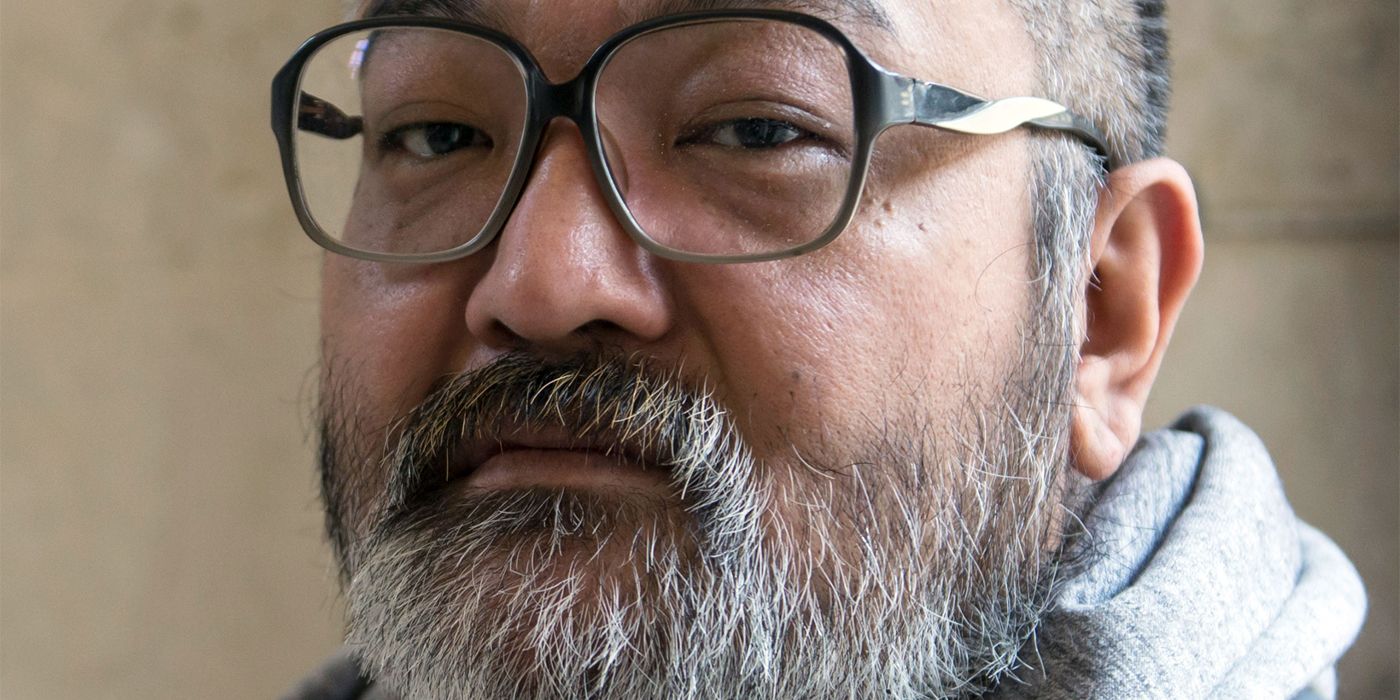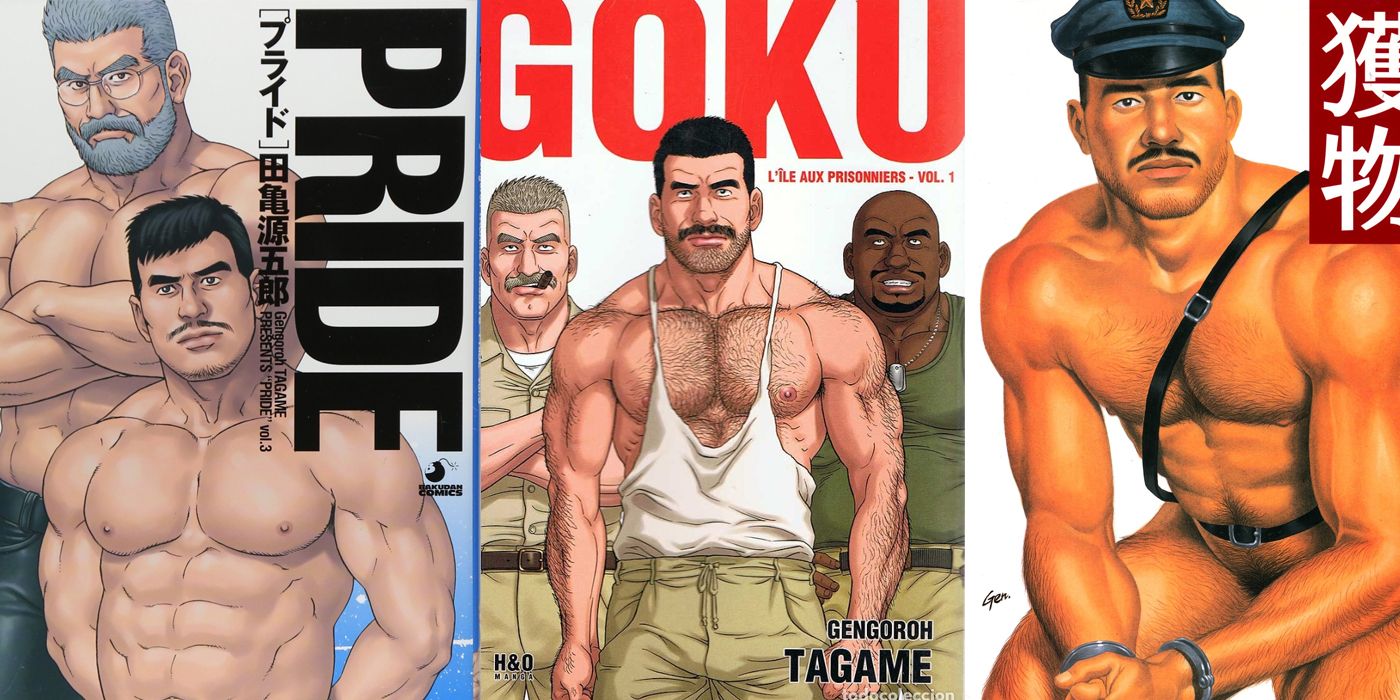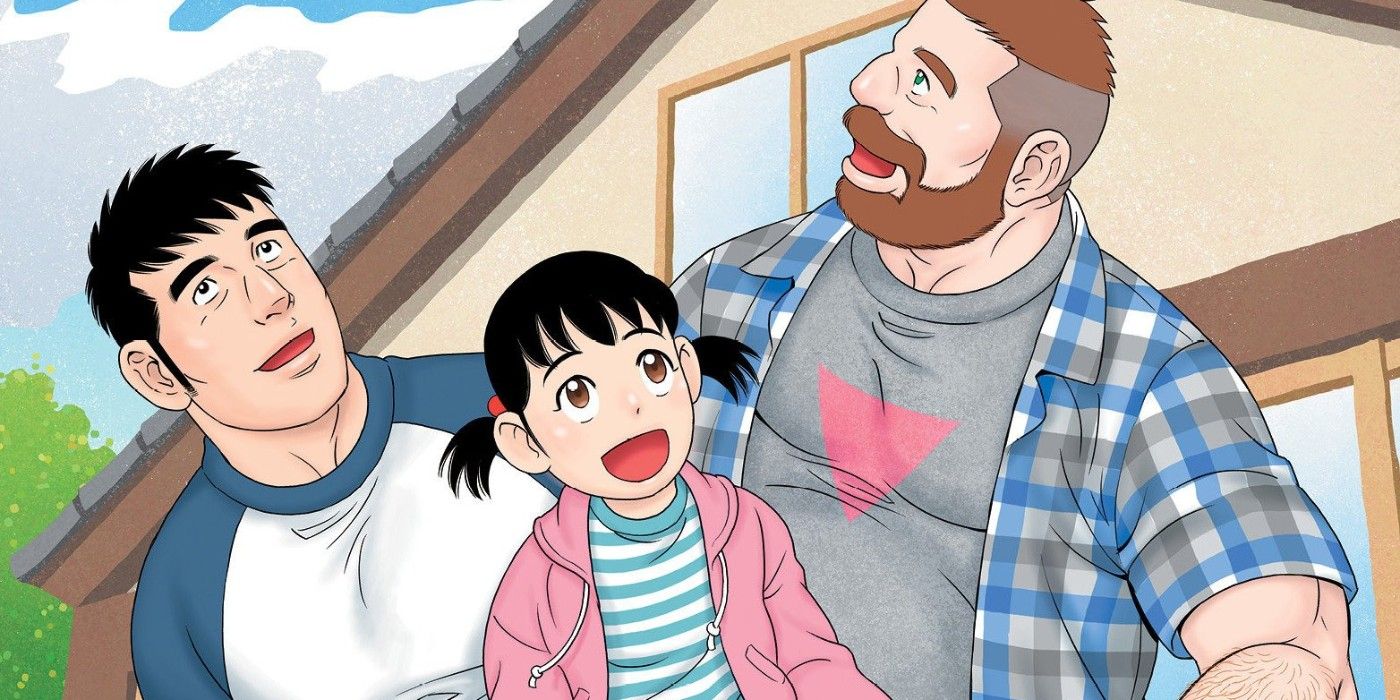Gengoroh Tagame is widely regarded as Japan's most influential creator of gay manga. Both as a mangaka and an art historian, Tagame has paved the way for different types of gay representation in the medium. His stories and art range from graphic, pornographic depictions of BDSM and hypermasculinity to all-ages manga addressing homophobia and unconventional families in Japan. Tagame is a co-founder of the G-men magazine and an openly gay artist.
Tagame is a pioneer of the "gei-comi" (gay comic) genre, often refereed to outside of Japan as "bara." Tagame has criticized the term "bara" as negatively describing gay manga, but did later clarify that the word can be convenient when describing certain body types. Gei-comi/bara isn't the same as yaoi or Boys' Love, which traditionally depicts slender bishonen and is targeted at a female audience. In contrast, gei-comi/bara is made for men interested in a type of macho fantasy. The genre features large, muscular, bear-like physiques and is mostly pornographic, involving fetishistic sadomasochism and domination.
Before starting his career in manga, Tagame studied graphic design and worked as a commercial art director. He was inspired by the American artist Bill Ward, and decided to publish his own art in 1986 under the Gengeroh Tagame pen name. His work has been published in gay magazines such as Sabu, SM-Z and G-men. The manga in G-men was especially important in making gay manga a marketable category in Japan.
Some of Tagame's most well-known work includes Pride, Jujitsu Kyoshi, Emono, Kimi yo Shiru ya Minami no Goku and House of Brutes. Pride revolves around a masculine, dominant man who is trained by his even more dominant professor to be submissive. Kimi yo Shiru ya Minami no Goku focuses on an American prison camp at the end of the Second World War. In this story, a Japanse soldier is exploited by his superiors, who possess some wild fantasies. These manga are visceral, intense, and pull no punches when it comes to their sexual content -- something Tagame is both beloved and criticized for. Fellow mangaka Susumu Hirosegawa notoriously disliked Tagame's focus on sexual violence.
Tagame certainly isn't for everyone, but he remains one of the most influential gay mangaka. His work stands in contrast to the aforementioned yaoi and BL genre, catered towards the female demographic. Tagame's work helped establish an alternative gay aesthetic. He navigated lust, passion, and sex with an endlessly provocative style, leaving a lasting mark on the medium. His work has been heavily discussed within Western academic scholarship.
Throughout his genre-bending career, Tagame's inspiration was straightforward -- in a 2017 interview, he simply says that he wrote what he wanted to read. In addition to his direct contributions to the medium, Tagame also plays an important role in gay manga as an art historian. In the two-volume series Gay Erotic Art in Japan, for instance, he archives a history of gay Japanese erotica.
Tagame's most popular manga is a far cry from the erotic stories he popularized. In 2010, the mangaka decided to write My Brother's Husband, a sensitive, all-ages manga exploring homosexual relationships in Japan. Serialized in Monthly Action from 2014 to 2017, the manga follows the story of Yaichi, a conservative Japanese father. His twin brother Ryoji lived in Canada until he passed away. One morning, a large man named Mike Flanagan turns up at Yaichi's doorstep, introducing himself as Ryoji's widower. Mike wants to explore Ryoji's past, and Yaichi reluctantly allows him to do so. Throughout the story, the protagonist is forced to grapple with his ingrained homophobia, contrasted with his own daughter's unbridled acceptance of gay relationships.
For obvious reasons, Tagame's more explicit work has struggled to make it to an English audience. My Brother's Husband, on the other hand, was published in English and has been internationally praised, winning multiple awards and receiving a live-action adaptation. In 2018, Tagame began serialization of a new manga, called Our Colors, which concluded in 2020. This manga focuses on a closeted gay protagonist and his relationship with a cafe manager. It is another all-ages manga, which perhaps indicates a departure from the adult content Tagame was once known for. With the success of My Brother's Husband and Our Colors, it seems the veteran mangaka's contributions to the medium are far from over.



